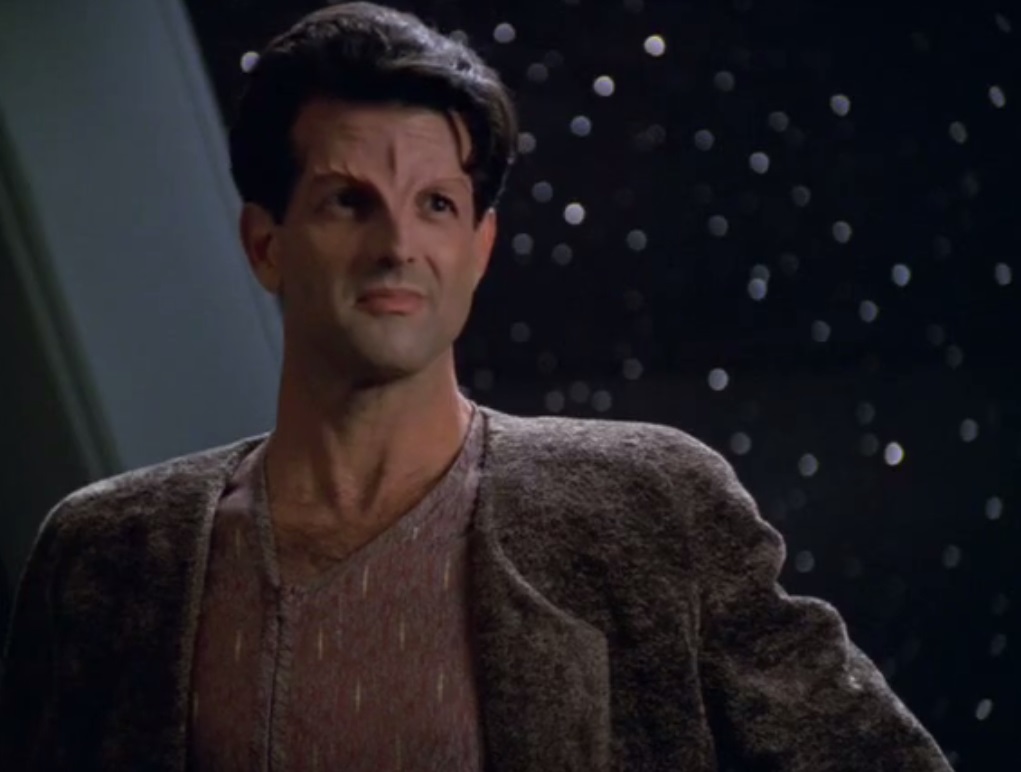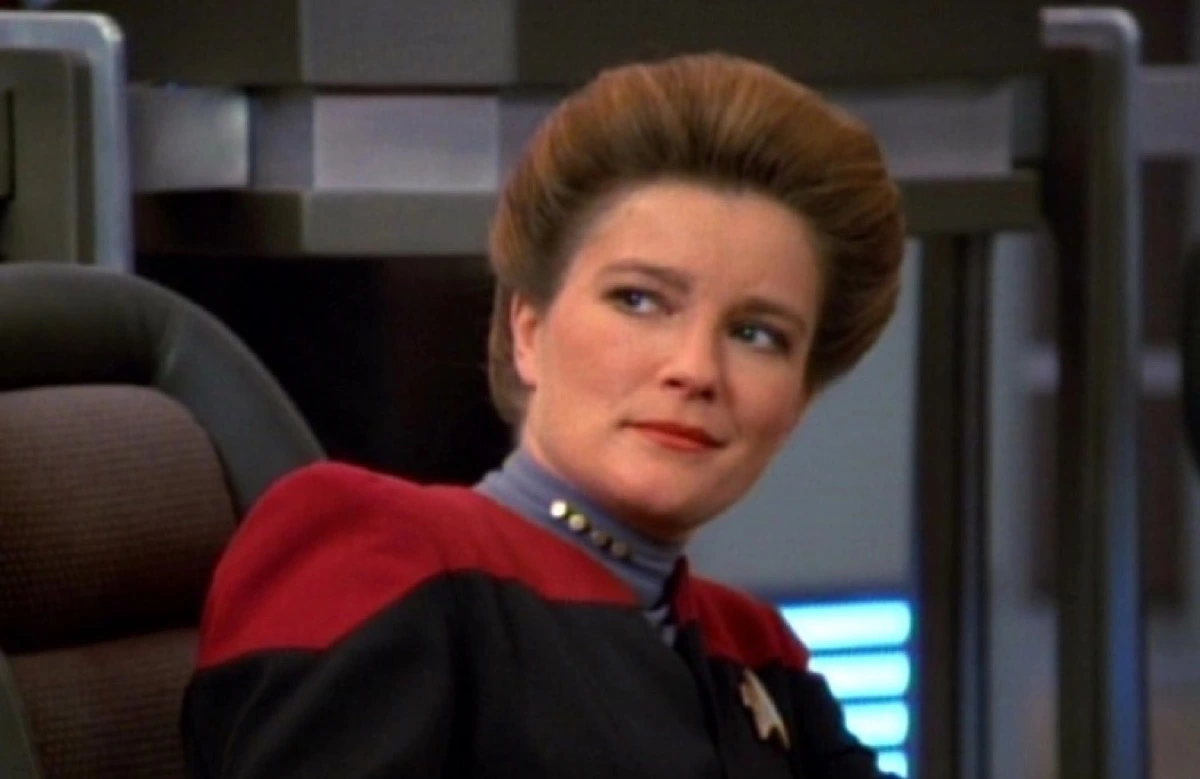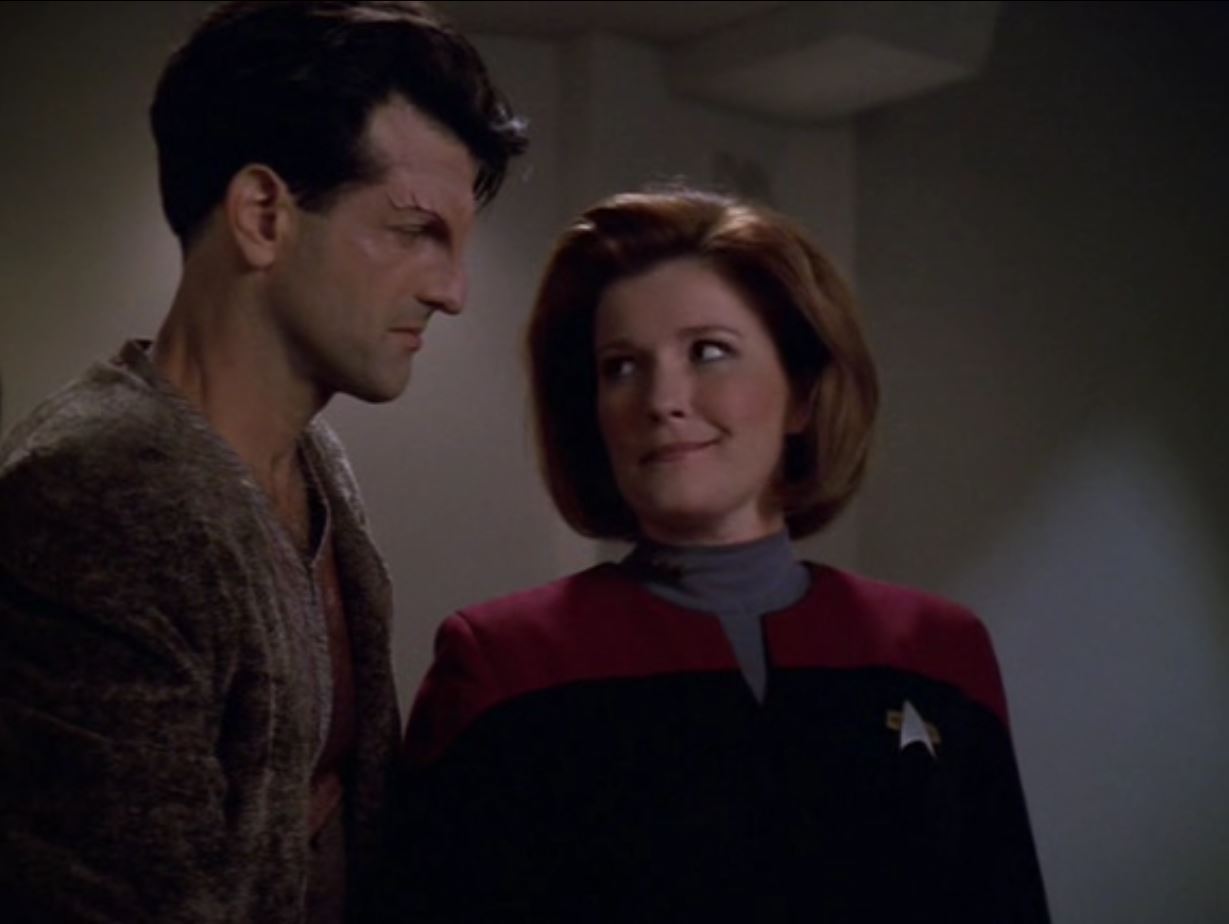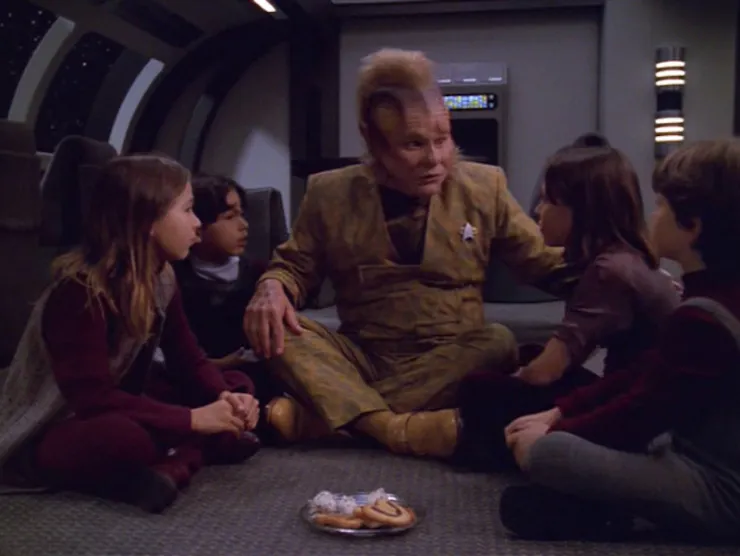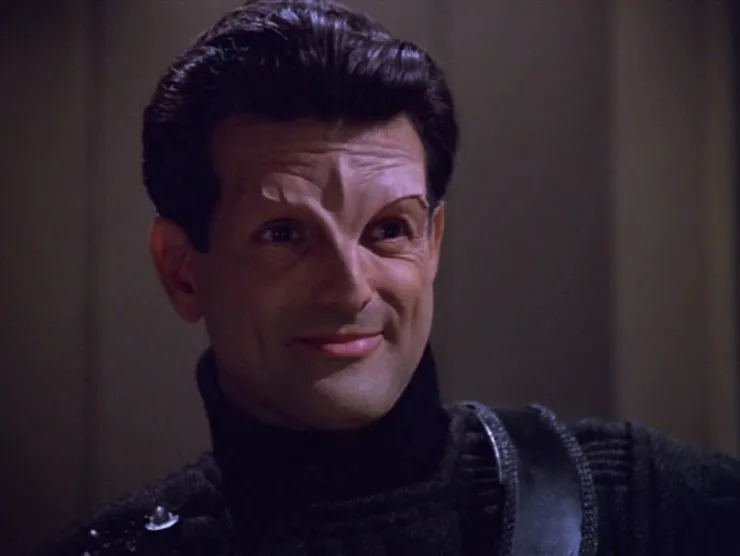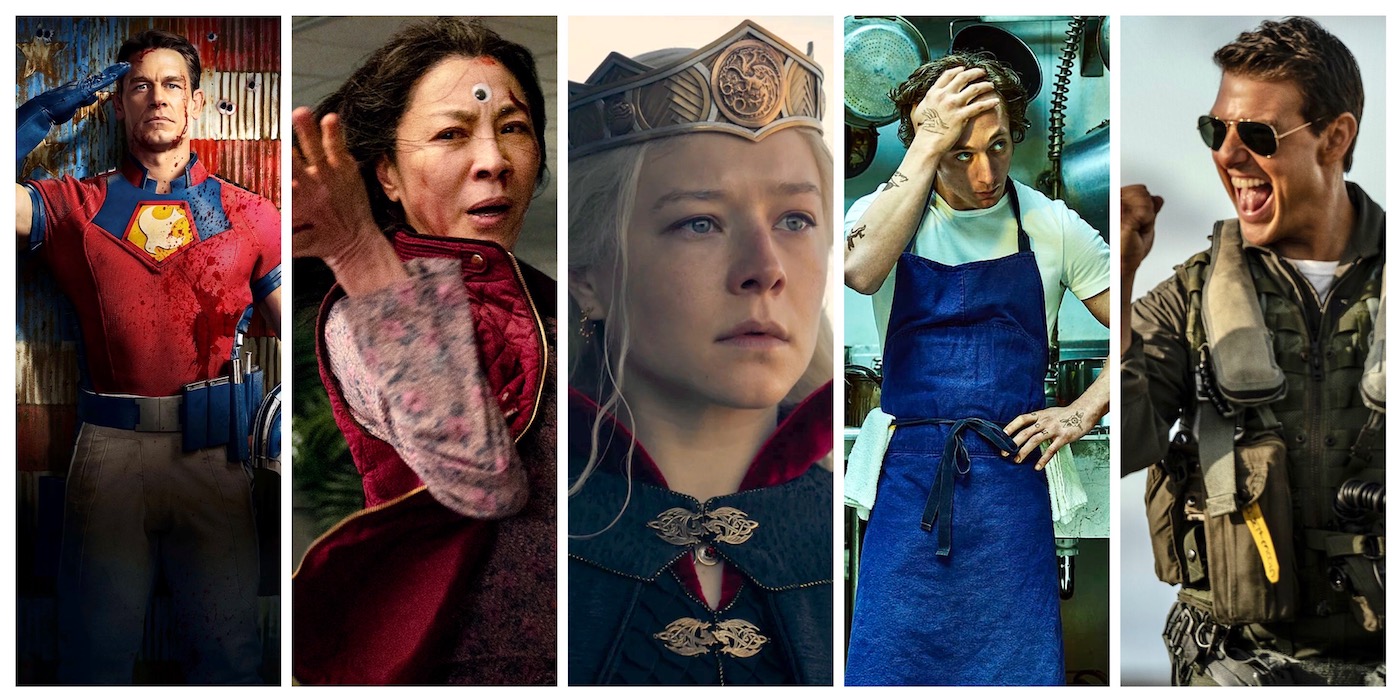Kate Mulgrew’s Favorite ‘Star Trek: Voyager’ Episode Holds Up
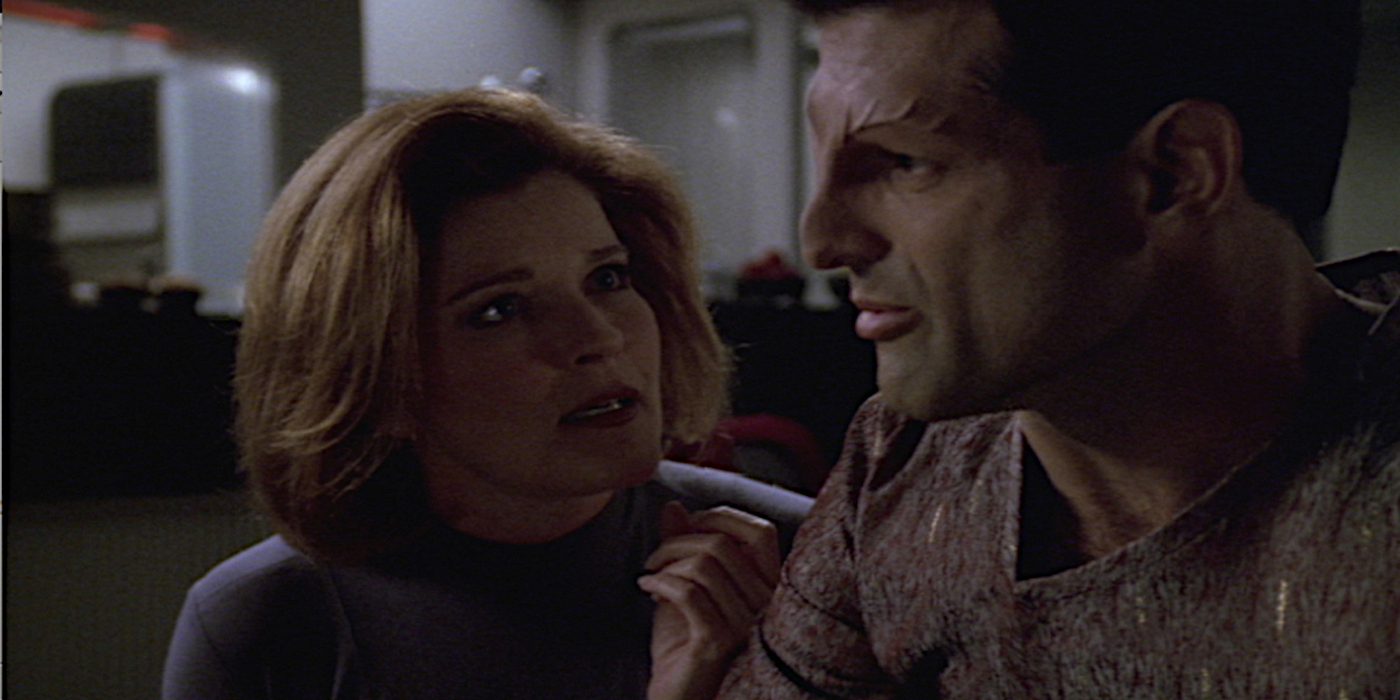
Star Trek: Voyager has no shortage of beloved stories. But one of the most intriguing is Kate Mulgrew’s favorite episode: “Counterpoint”.
When you ask people about their favorite Star Trek: Voyager episode, there are a lot of common replies. “Scorpion” famously introduces both Species 8472 and Seven of Nine. “Year of Hell” shows us a world where Captain Janeway has to sacrifice everything – and, in a way, she still loses. And “Bride of Chaotica” is arguably the funniest holodeck episode of all time.
The list of greats goes on and on. But one episode of Star Trek: Voyager that is not on as many lists is the season 5 story “Counterpoint”. But it is on one person’s list, right at the top: Captain Janeway herself, Kate Mulgrew. Back in 2007, Mulgrew chose “Counterpoint” as her “captain’s pick” for the DVD collection Star Trek: Fan Collective – Captain’s Log. And it just so happens “Counterpoint” just got a reference in the season finale of Star Trek: Prodigy.
“Counterpoint” is not the original title for this episode – “Refugee” is. And early in pitches, the concept was sold as “Diary of Anne Frank on Voyager”. However, the story we see in the end has far more nuance than both those facts suggest. “Counterpoint” is a story about allyship, personal sacrifice, and trust. And that makes it worthy of deeper analysis.
Time and a Place
December 16, 1998. That is the date “Counterpoint” first airs. And it’s worth considering what sort of world this story exists in upon its original release. For Star Trek in general, this is still a golden age for the franchise. Star Trek: The Next Generation is three movies deep into its cinematic franchise. Deep Space Nine is heading into its final, triumphant season. And for Star Trek: Voyager specifically, we are in the show’s fifth season, an era full of classic episodes.
And in the United States, where ‘Star Trek’ is produced, written, and filmed, things are complex but good. Sure, we’re at peak Bill Clinton impeachment scandal, but we’re not at war, social upheaval is minimal, and we’re also announcing the very first US budget surplus in three decades. And that stability is something you see in media. Consider 1998’s Godzilla – a movie where the giant lizard cautiously bends around buildings so as not to knock any of them down.
Heck, think about Star Trek: Insurrection, the movie where the Enterprise goes on shore leave and manages to rescue people before they can even become refugees. In short, if there is a year that sits furthest between two tumultuous times in America, 1998 is probably it.
And while 1999 would see the United States take on some (“some” being the operative word here) Kosovar refugees, the topic of widespread ethnic tensions in the Yugoslav province of Kosovo was not the hottest topic in the US in 1998. Yet “Counterpoint” exists just the same. And its story is still relevant.
The Story of Counterpoint
Voyager needs to travel through a part of space under the control of the Devore Imperium. Unfortunately, the Devore have outlawed telepaths – and that includes Vulcans. In addition, Janeway also has a group of telepathic Brenari refugees aboard Voyager. She’s trying to find a wormhole to help them escape genocide.
Everything is going okay until the lead Devore inspector, Kashyk, comes to Janeway seeking asylum. He claims he no longer wants to be part of the Imperium’s atrocities. He also tells Janeway that she’s heading for a trap where multiple Devore warships plan to destroy her ship and everyone on it.
Janeway cautiously accepts Kashyk aboard and the two work together to figure out where the constantly moving wormhole will appear next. Somewhere along the way the two catch feelings for one another. And while the two do figure out the wormhole’s travel pattern, they also discover there’s an inevitable place where Voyager must encounter Devore warships again.
Kashyk goes back to those ships to take over the inspection, promising to protect the Brenari aboard. But the whole thing is a rouse. Kashyk used Janeway to find the wormhole and intends to destroy it along with the Brenari. Luckily, Janeway never trusts Kashyk entirely and creates a false reading for him to follow while the Brenari escape through the actual wormhole.
A Return to the Mission Statement
Star Trek: Voyager‘s entire existence is in part due to a need for more big TNG energy. Sure, everyone loves Deep Space Nine now, but in the ’90s that series flailed due to its darker themes and its focus on long-form continuity. The reason Voyager debuts as quickly as it does in the grand scheme of things is that producers wanted a more upbeat, episodic Trek in fan eyeballs.
And then they made a show where a starship is constantly alone and on the run, trying desperately to get back home before everyone on the ship dies horribly. Fun!
As you might imagine, there are not exactly a lot of opportunities for Voyager to investigate distress calls, something the Enterprise D does seemingly every week. But “Counterpoint” makes for an important return to form in that regard. Yes, Janeway is trying to get the heck of out Devore space regardless, but that would be a lot easier if she wasn’t hiding a bunch of refugees.
Voyager does not stand to gain in any way here. Janeway helps the Brenari, despite great personal risk, solely because they asked and it is the right thing to do. And credit where credit is due, it’s a lot harder to do the right thing when the consequence is the life of you and everyone under your commander.
Picard never has it this hard because he has Starfleet backing him up. It’s easier to do the right thing when you’ve got the flagship of the fleet and the most powerful Federation in the universe on your side. Janeway does this backward, in heels, in a science vessel that’s half Maquis and all alone.
Janeway in Love
Kate Mulgrew loves “Counterpoint”. And one of the reasons she loves it so much is because of the complex relationship Janeway has with Inspector Kashyk. “It’s the first time we have seen Janeway perplexed in a deeply emotional way,” Mulgrew says in an interview with SYFY Wire. “Is she really falling in love with him? Is he seriously in love with her? Or is it just a ruse? What a rich, wonderful story to play with.”
There are a lot of ways Janeway’s relationship with Kashyk can go wrong. Janeway does not always choose her alliances wisely. But in “Counterpoint” Janeway successfully walks an impossibly thin line.
There’s no reason to believe Janeway does not have feelings for Kashyk. For the record, I’m positive she does. But for the good of the Brenari and Voyager, Janeway keeps her guard up. She plans to double-cross him before he can double-cross her first – just in case.
Is it weird watching Janeway snuggle up to a space Nazi? Yeah, I don’t love it. But what matters is that, despite her hope that her side piece could become a main course, Janeway always sides with the Brenari first. And because of that, the Brenari escape with their lives. And the Voyager crew could’ve very easily died as a consequence.
What Could Have Been
“Counterpoint” is very good, but it’s not perfect. This is definitely one of those Star Trek: Voyager stories that deserves a multi-episode arc. The Brenari are poorly represented here. There’s an argument to be made that of course, they wouldn’t hang around Janeway much once she sidles up to Kashyk, but regardless they deserve more screen time.
The Brenari are telepaths and we barely scratch the surface. There’s a lot to say about the Devore wiping out the kinds of people who know, understand, and care about the feelings of otherwise as a natural instinct. After present goings-on are anything to go by (and they are) the people whose heads tend to be first on the block are the ones who both provide and need the most care.
But the biggest shame with “Counterpoint” is the ending. Star Trek: Voyager loves a one-and-done episode, but there’s no way the Devore Imperium lets Janeway just go after she aids the Brenari and tricks Kashyk. The whole point is that Voyager has no Starfleet to back them up. For them to get away without consequence kind of minimizes the risk they take in the first place.
Why “Counterpoint” Still Matters
Not to Wheel of Morality you, but it’s worth talking about why stories about helping refugees regardless of personal risk are important. We are living in truly terrifying times and refugees are not in short supply. And the answer from a lot of United States leadership, just as an example, is to be flip, to take the side of fascists, and to drive even more people out of their homes.
Florida and Texas, for example, make it dangerous to be trans within their borders. Trans children lose rights every day. Trans people and their families are literally packing up and moving to new states. Some of them can afford to do that, but a lot more of them can’t. And even if they do, then what? What happens if their new home also starts enacting laws against their very existence?
The United States of America was far from safe back in 1998 when “Counterpoint” first aired. But at least there was a veneer that we were trying to make everyone safe. In 2022, hate is the message. Helping refugees in this environment is risky because we do not have anything representing a Federation backing us up.
But it’s still the right thing to do. Janeway knows that. The writers of “Counterpoint” know that. And if you forgot that doing the right thing is important especially when it comes at great personal risk, you should probably rewatch this, Kate Mulgrew’s favorite episode of Star Trek: Voyager.


